Atomic Mass Games provided a copy of the Core Set and assorted Expansions for the purposes of this review. For more information on Shatterpoint, including assembly diagrams and links to official communications and social media, click here!
The clash of lightsabers. The whine of laser fire. Clone troopers leaping over barricades and ascending structures on cables. Jedi and their Padawans dashing and flipping over a battlefield. There are a lot of Star Wars tabletop games on the markets, but very few of them feel like modern Star Wars. Until now.
Star Wars: Shatterpoint, developed by Atomic Mass Games, is a brand new skirmish scale wargame that is thematically set firmly in the Clone Wars. We know for sure there will be future releases from the entire Star Wars timeline but it’s clear from getting a few games in that Shatterpoint does not play like the Original Trilogy.
Combat in the OT era, even lightsaber combat, is slow and methodical. Plodding even. Apart from the Ewok battle everything is measured with troops hunkering down and shooting down hallways and lightsaber combatants squaring off in steady duels. The Clone Wars era, including the Prequel trilogy, is the complete opposite and Shatterpoint firmly takes inspiration from this era.
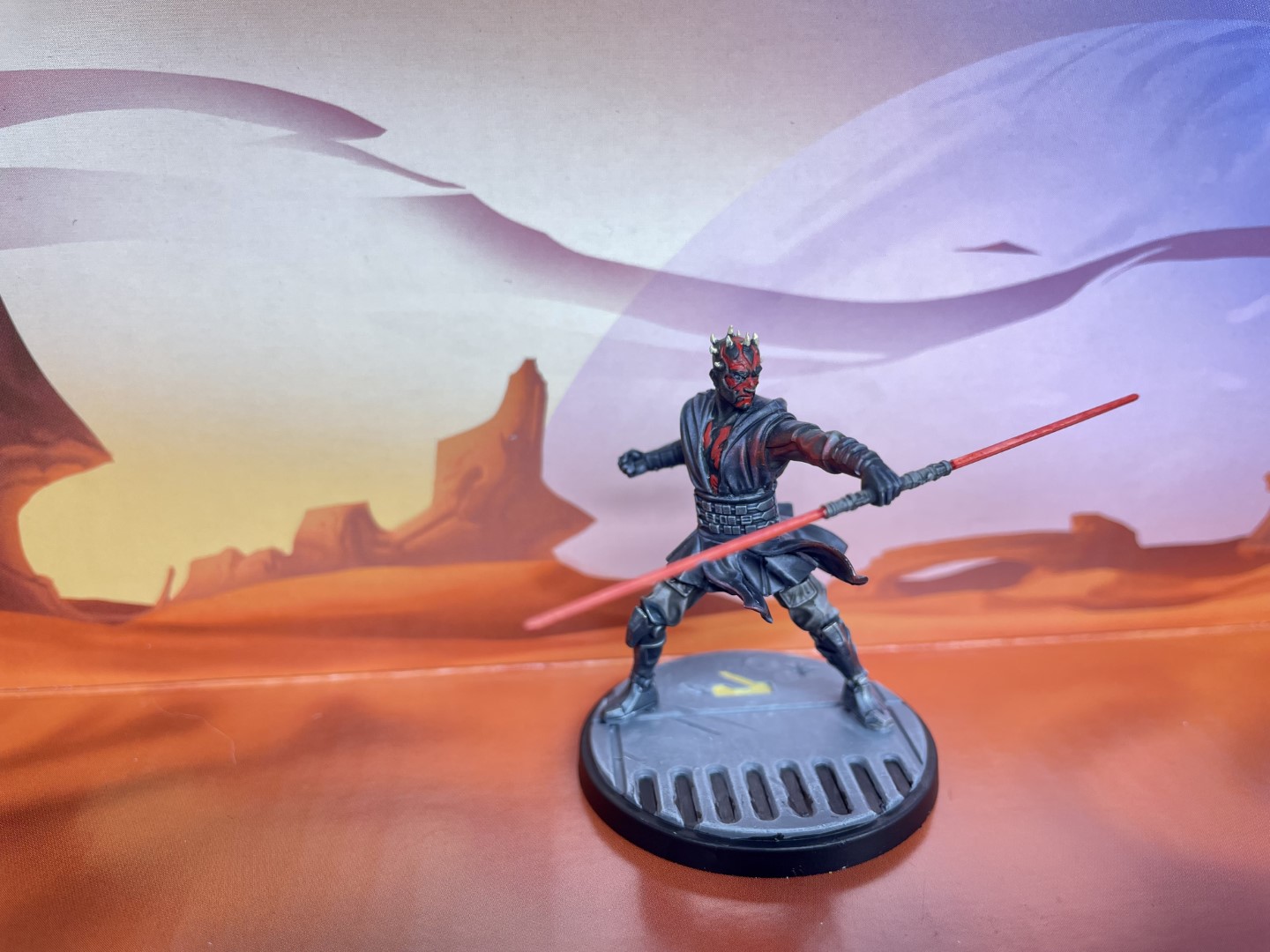
Combat is fast and positional. Characters will run, leap, and flip themselves halfway across the board in a single activation. Everyone from Battledroids to Mandalorians will find themselves jumping up 1 or 2 levels of elevation while raining blaster fire up, down, and all around. Jedi will jump, clash, and reposition all while attacking. In short, it feels great.
The Shatterpoint Structure
A Shatterpoint is a concept that already exists in the Star Wars lore; it’s a pivotal moment in time where the actions of those involved could make dramatic changes to the future. Each game of Shatterpoint is one such moment and players take command of a strike force with the power to change the future.
Star Wars is all about balance, about the push and pull of light and dark. So is Shatterpoint. Matches are divided into Struggles; winning a game of Shatterpoint means winning 2 out of 3 Struggles. Rather than scoring points Struggles are won through an objective focused game of tug of war.
The Core Set comes with a single set of missions called “Shifting Priorities”. Each set includes a set up card (Core Set is a 3×3 grid of equally spaced objectives) and 9 Struggle cards divided into 3 Phases. You’ll only play with 1 card from each Phase per match and these cards indicate exactly which objectives are Active. Details are clear yet, but AMG has indicated that new Mission sets are on the way as well.

The game begins with a clear Struggle token in the center of the Struggle tracker. At the end of your turn you’ll pull that token towards your side of the tracker a number of spaces equal to the number of Active Objectives you control. On your opponent’s turn they’ll pull it back towards them and round and round you’ll go trying to pull the token far enough to meet the black cube at the end
The black cubes represent Momentum and will change the shape of the struggle. Each time you Wound an opponent’s model you’ll add a cube to your end of the tracker shortening the distance you’ll need to pull the Struggle token. You’ll also add a black cube if the Struggle token is on your opponent’s side of the tracker after you’ve taken your turn and you’ll both add one if it ends in the center—this represents your forces digging deep into their well of resolve.
This system rewards good objective control but also enables exciting moments where you come from behind. It’s possible to find yourself holding the Struggle token on your side of the tracker over and over without ever actually winning, watching your opponent flood the Tracker with black cubes. Then, suddenly, a powerful series of activations gives them the 2-3 points they need to jump to a win.
When a Struggle is won, the game pauses for a quick reset. The tracker is completely reset and the next Mission card is drawn. This card will completely change the battlefield. Suddenly objectives you had control of may deactivate, scoring no points. Objectives you ignored now are critical. Shifting Priorities features Priority Objectives in Phases 2 and 3 meaning some Objectives are worth more points on the tracker. Notably your units are unchanged; they stay where they are with their current buffs and health.
This dynamic battlefield impacts tactics in a massive way. You can’t just play to overload the Phase 1 objectives because your forces will be out of position going into Phase 2. Units will only get a few activations (more on that later) each game so you need to play with the future in mind. In fact, it’s a very legitimate strategy to abandon the first Struggle after a few turns and play for the 2nd and 3rd; the loser of a Struggle gets to pick the objective orientation on the next card which can be a massive advantage.
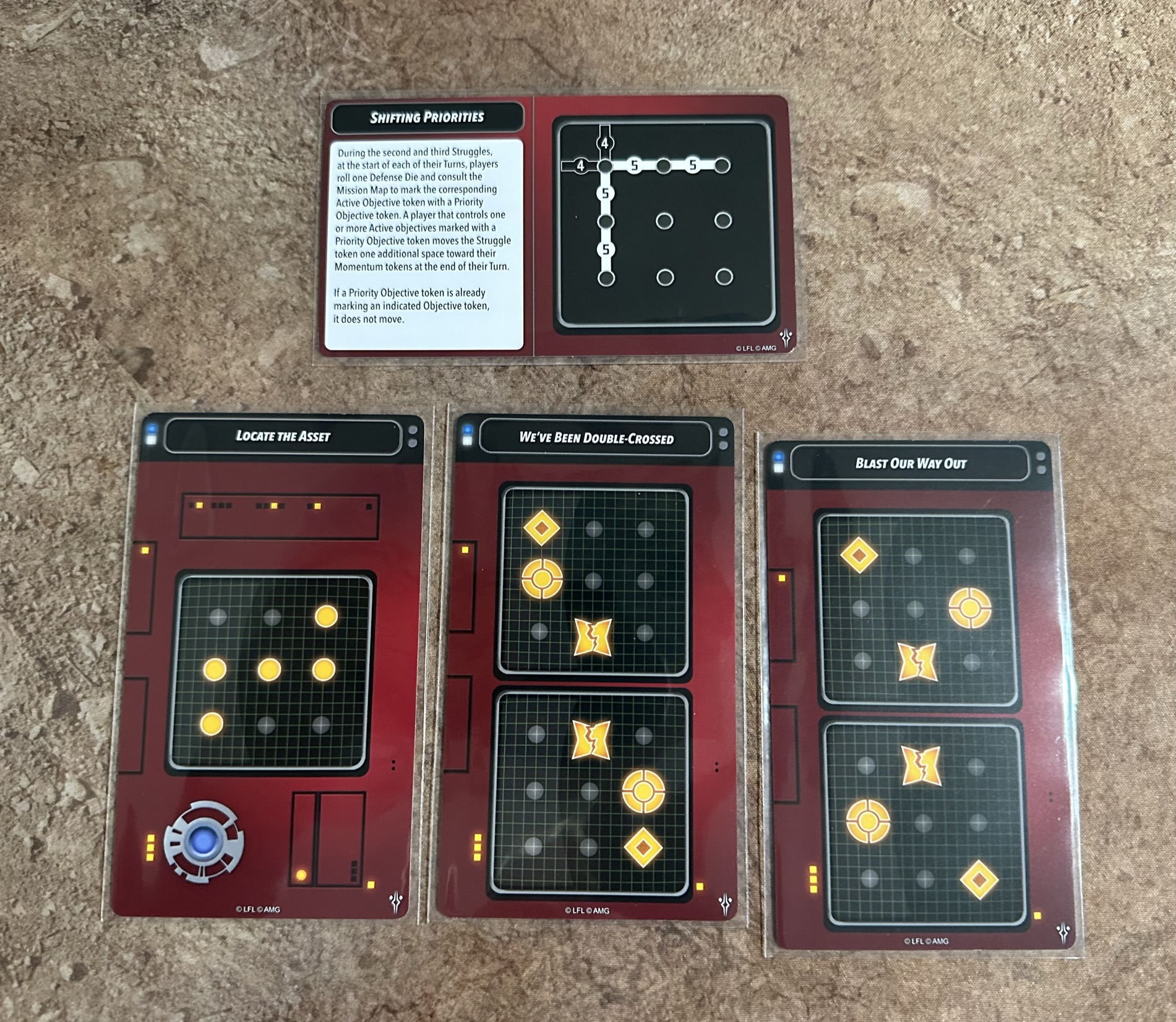
Not only does this shifting battlefield play well, it’s also just a good bit of narrative fun. The three phases play out like a 3 Act structure and very much call to mind a Saturday morning cartoon. If you told me that Anakin and Ahsoka having to Locate and Asset before getting Double Crossed and Blasting There Way out was an actual Clone Wars episode I’d believe you no questions asked.
The Action
The frenetic chaos of combat is not only captured a shifting battlefield, but in unit activation as well. Each unit comes with an Order card that is shuffled into a personal deck along with a single Shatterpoint card. On your turn you draw a card and activate that unit.
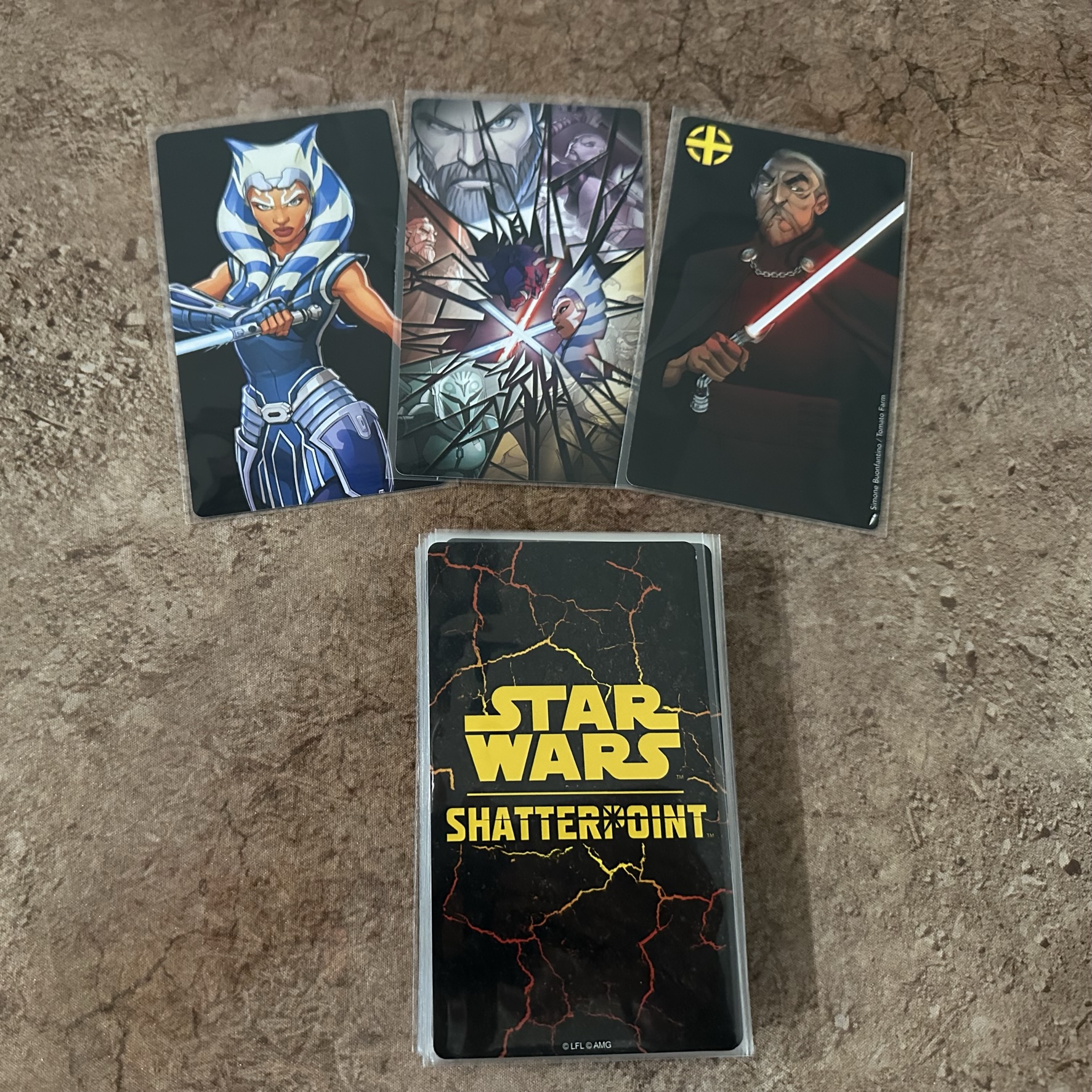
This has been controversial in discussions but in my experience it contributes positively to the flux of a match. You’ll never really know when a unit will activate but you do know that a unit can only typically activate once before everything else has to. It might feel great initially to activate your powerful Primary units on to objectives, confident in their defensive abilities to survive but suddenly you find yourself staring down the latter stages of a Struggle (and possibly the early stages of the next one) only pushing your weaker support units around. Seeing that on the opposite side of the table will also inform your strategy and change how you play.
There are also some elements of control. You can spend a Force Point (a resource used to activate powerful abilities) to Reserve an Order card and play the next one. The reserved card remains face up and is eligible to activated whenever you want. This allows you to prevent a key unit from activating too early or simply gives you the option to activate them at the most opportune moment. The Shatterpoint card serves as a wild, letting you activate any unit when its drawn. While it can’t be reserved, you can similarly spend a force point to shuffle it back into your deck.
In the same way that you don’t have full knowledge of every mission card you’ll play, you also don’t have full control of your Strike Force’s sequence of activations. Shatterpoint requires a mastery of reactive tactics. Your strategy must be flexible, you have to ride the winds of the Force.
In keeping with the pattern, this reactive element is further reinforced in unit activations. While a Unit will typically only activate one time before you reach the end of your deck and reshuffle, they won’t just sit idly waiting. Most units in the core box contain opportunities to move or fight outside of activations, with quite a few coming from synergistic list building.
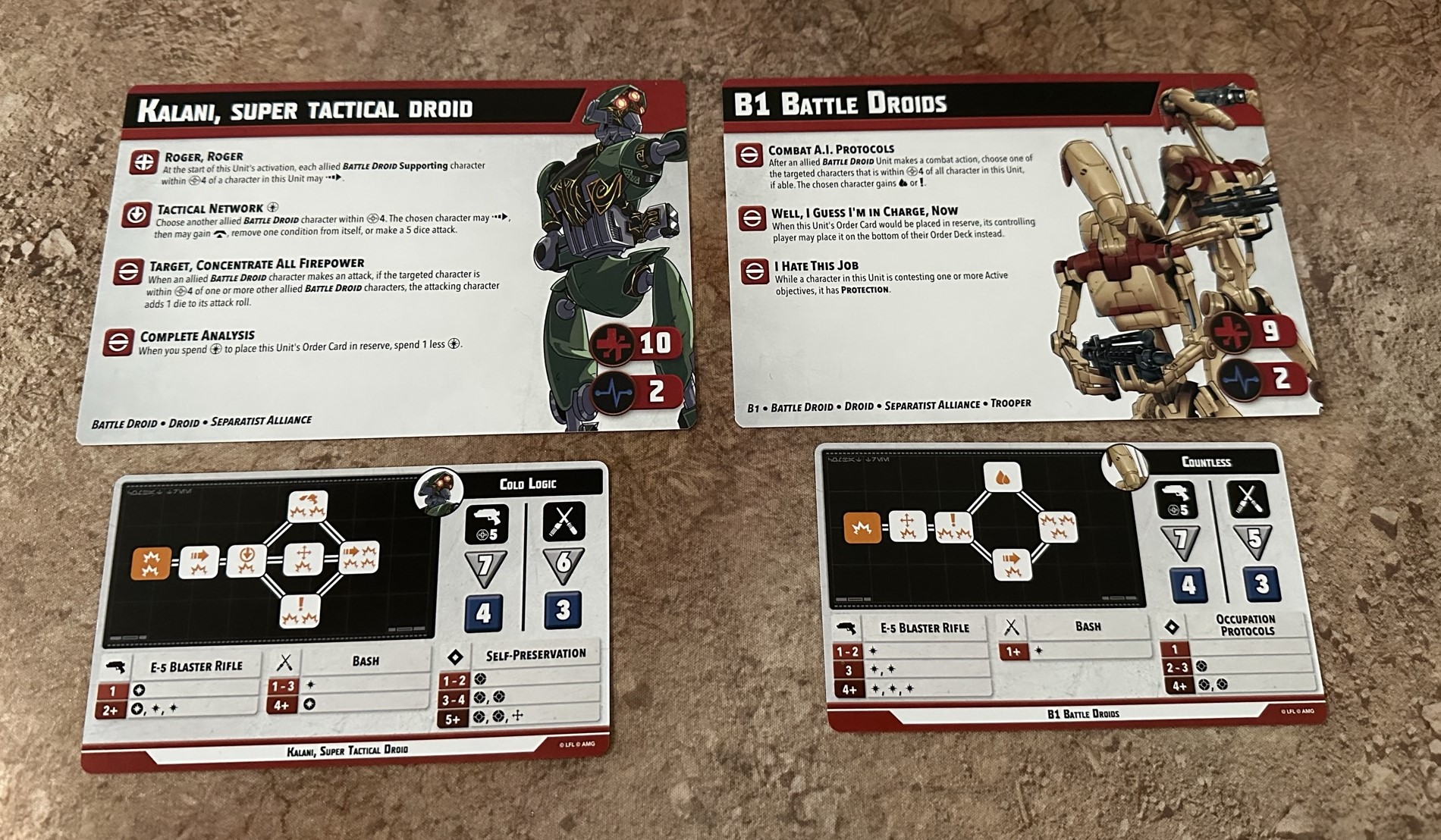
Kalani and the B1 Battle Droids feature in the Core Set and highlight some of these synergies. Kalani lets nearby Battle Droids take an extra move upon activation and can also spend a Force Point to let them do something out of sequence. B1 Battle Droids get benefits for staying nearby anyway, so this threesome can really lay down firepower and stay active even when an individual card isn’t drawn.
It isn’t just these, however. An early expansion includes Magnaguard which also have the Battle Droid keyword giving Kalani even more flexibility and expanding the overlapping aura of benefits. Again in the core set you can pair the Light Side Bo Katan with Dark Side Gar Saxon and all the Mandalorian Support Units to find yourself tossing buffs and out-of-sequence movement all over the place.
Combat Crunch
Combat is my favorite system in the game, though it isn’t without it’s pitfalls. It makes the most sense to explain it via an image, so take a second to look at Darth Maul’s double-sided combat card.

Primary units (your big name heroes) have double sided cards that allow them to shift stances, typically between offence and defense or melee vs ranged focus. All other units have 1 side, but it all works the same.
To attack you build a pool of attack dice starting with the base number (gray triangle pictured) and adding bonuses from Focus Actions or other supporting buffs. Your opponent will build a pool similarly, only using defense dice (blue square pictured).
Offensive and Defensive successes offset, with the result being a number of Successes that the attacking character will spend to move along the pictured combat tree. These trees feature branches which allow you to choose how you want to focus your attack. The middle line in Maul’s Dark Rage tree features quite a few Pushes if you go far enough; enough to likely shove models off of Objectives or towards friendly models. Alternatively, the top line gives you a jump action right before the final shove which can give you both space and vertical movement!
Combat also includes expertise symbols. While not quite a sucess, in some situations they are even more valuable as they open up additional options. As an example, Maul’s Juyo expertise includes healing and movement on defense.
This all adds up to a deeply robust combat system, with quite a few branching options. Between this and abilities it never feels like your characters only get to activate once. Whether its combat, status effects, buffs, and more there’s just lots of stuff going on which contributes to that frenetic Saturday morning cartoon vibe.
It’s not all Light, however. Combat is also where my biggest complaint about the Shatterpoint system exists. Line of Sight and Cover are clunky and despite overly technical descriptions, often boil down to “everyone almost always has line of sight to everyone else” and “everyone almost always gets cover”.
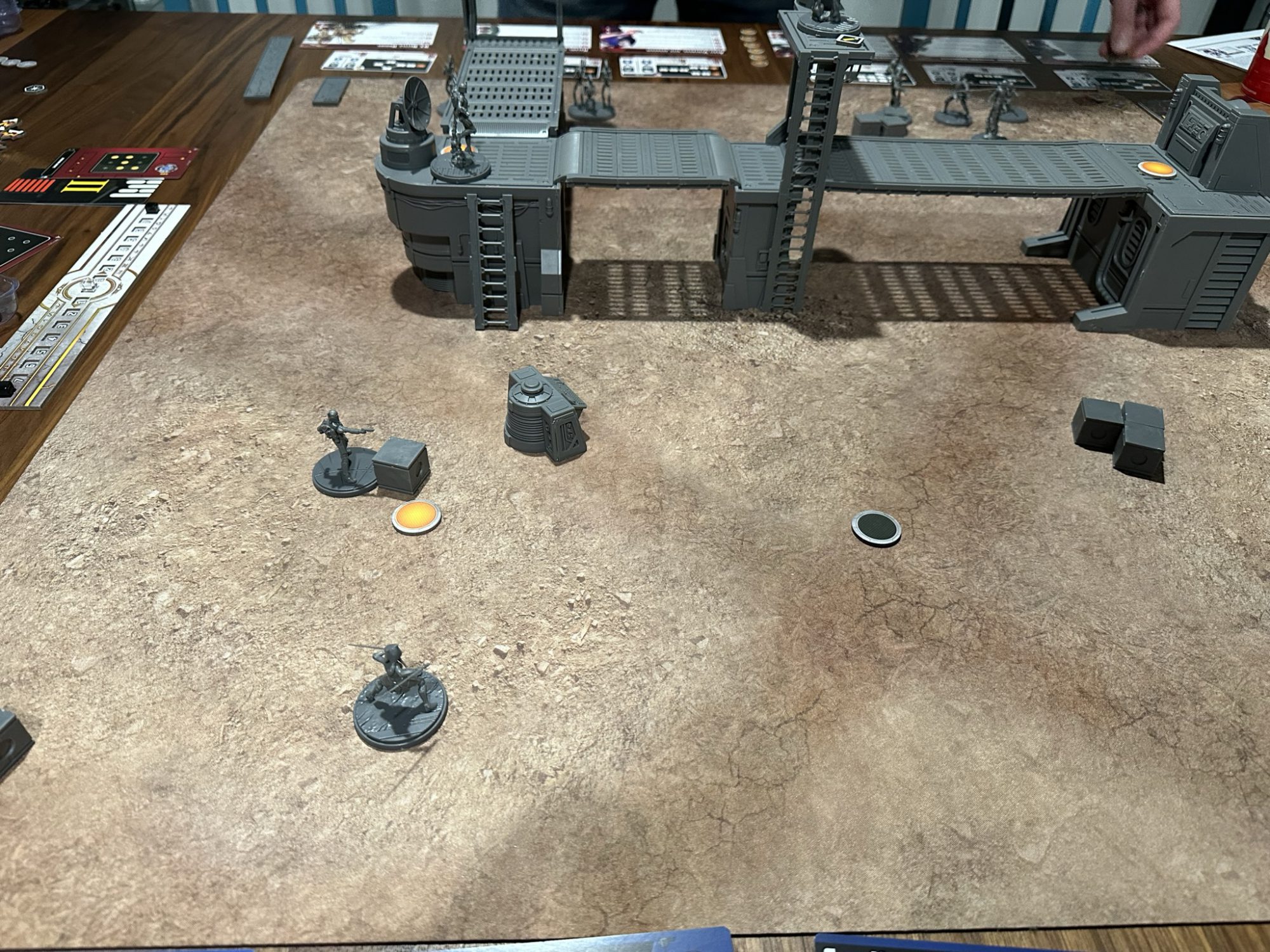
Shatterpoint does not have “true line of sight” which is any system where you bend over and try to see what your miniature can see. It’s a system that has its own pitfalls, particularly when attempting to define cover or obscured models, but it’s at least typically intuitive.
Shatterpoint’s technical definitions of Line of Sight are much cleaner once you internalize them, but they create very unintuitive situations for both LOS and cover. Any terrain at a lower elevation than a target is ignored for determining LOS so effectively any model standing on terrain can both see and be seen by any model on the ground, regardless of what intervenes. Because the Core Set includes no Elevation 2 blocking terrain, there is effectively no way to block LOS to or from models standing on any form of terrain.
Because you evaluate LOS and Cover in a 2-dimensional top-down fashion, anyone standing on any terrain also effectively gets Cover when attacked by anyone more than Range 2 away. This includes two models standing way out in the open on opposite ends of an open gantry with nothing in between them.
[Editor’s Note: AMG has published Day 1 Errata and FAQs, the most significant of which is a change to cover. Cover is now harder to get and requires first having a Hunker token! This will lead to less Cover in general, but increase the survivability and utility of units that easily get Hunker like Clone Troopers!]
It isn’t…bad. It’s just…weird. There are some nuances I didn’t delve into, but it’s a system that means you can generally always shoot someone but they’ll generally always get Cover unless they’re on the ground level. Coupled with every character being able to Climb (and many being able to jump), dense multilevel terrain doesn’t have quite the impact you’d expect when looking at a table. There is tall blocking terrain in one of the first Terrain expansions that I am planning to pick up particularly to mess with this axiom, but it does require an additional purchase.
Luckily, the ability to shoot pretty much anyone you want doesn’t come with the implication that stuff is going to die quickly. By and large, Shatterpoint is not a bloody game. Models have both a Health stat (Stamina) and a Durability stat which is how many times they can be wounded before being taken out.

When a model’s health pool is exhausted, they’re laid down and effectively taken off the battlefield. They can’t contest objectives, take any more damage, trigger abilities, and so on. The next time they would activate they stand up, clear their damage, and take a full activation before gaining a Wound token. At this point if their Wound tokens equal their Durability stat they’re removed.
This means that even in the worst case of Durability 1, all units are guaranteed at least 1 activation before being pulled off the table. All core box models, even the fragile B1s, have a durability of at least 2 which means they have to be taken down a full two times before they’re removed.
This is great for two reasons. The first is that having your cool freshly painted models shot off the board before they do anything sucks. The second is that it contributes to a general feeling that this is a game of tactical and strategic objective control, not one where you aim to table your opponent. Yes, wounding an enemy model benefits you in the single Struggle you’re on but taking a unit off the table represents a steep investment of your limited actions and time and is rarely worth it.
Parting Thoughts
This is not our first Shatterpoint article, nor will it be our last. We’ve been excited about this new Star Wars adventure since the initial announcement and having gotten our hands on it and played a few games that hype has been fulfilled.
Shatterpoint is snappy yet full of tactical depth. Despite being a skirmish game, matches are likely to push 90 minutes or more if you go the full 3 skirmishes and every minute is going to be layered with decision after decision. Overlapping abilities minimize downtime, combat comes with as much movement as an activation, and list building options will only grow.
The force is strong with this one. Stay tuned for more coverage in the coming days and weeks, including painting instructions and expansion reviews!
For more information check out the AMG Shatterpoint homepage!
Are you picking up Shatterpoint? Who do you most want to see? Let us know in the comments!
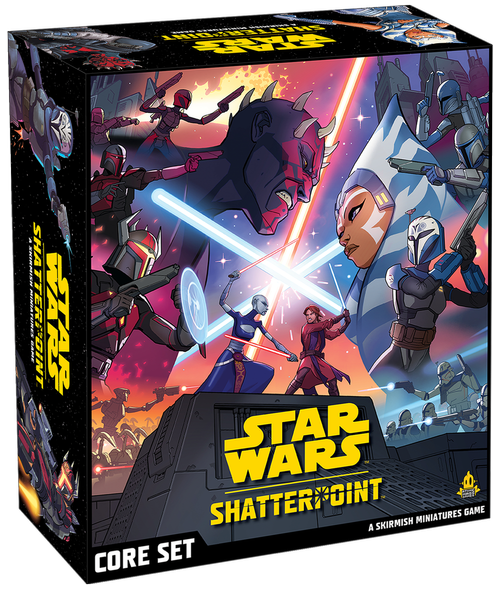


You must be logged in to post a comment.